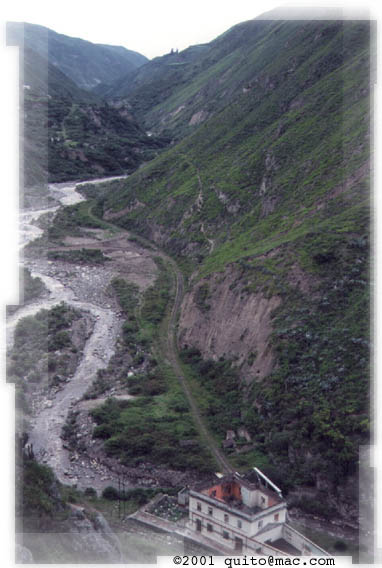|
Several plans and attempts were made to build the railway from Guayaquil to Quito, since 1860 until 1874, when the first locomotive reached Milagro. But it was only in 1895, when Eloy Alfaro was president, that contacts were made with North American technicians Archer Harman and Edward Morely, representatives of an American company interested in the building of the "most difficult railway in the world" as it was called at that time. An agreement was reached, and "The Guayaquil and Quito Railway Company" started the construction in 1899. The tracks finally reached a huge obstacle - an almost perpendicular wall of rock - called the "Devil's Nose". Many lives were shed in the building of what until now is called a masterpiece of railway engineering : a zig-zag carved out of the rock, which allows the train, by advancing and backing up, to reach the necessary height to the town of Alausí. The train finally reached Alausí in September 1902 and Riobamba in July 1905. From this point on, the construction was easier. The highest point of the route - Urbina 3604 meters - was reached by the end of 1905 and finally on June 25, 1908 the train made it's triumphal entrance to Quito and was received by arches of palms, laurel and flowers, bells tolling, banquets, dances and popular festivities that lasted four days. Later, in September 1915 the construction of the railway betveen Sibambe and Cuenca was started. The works proceeded slowly until 1930 when the train arrived to the station of El Tambo. In August 1945 the train reached Azogues and finally, the railroad to Cuenca was officially inaugurated on March 6, 1965. |
 |